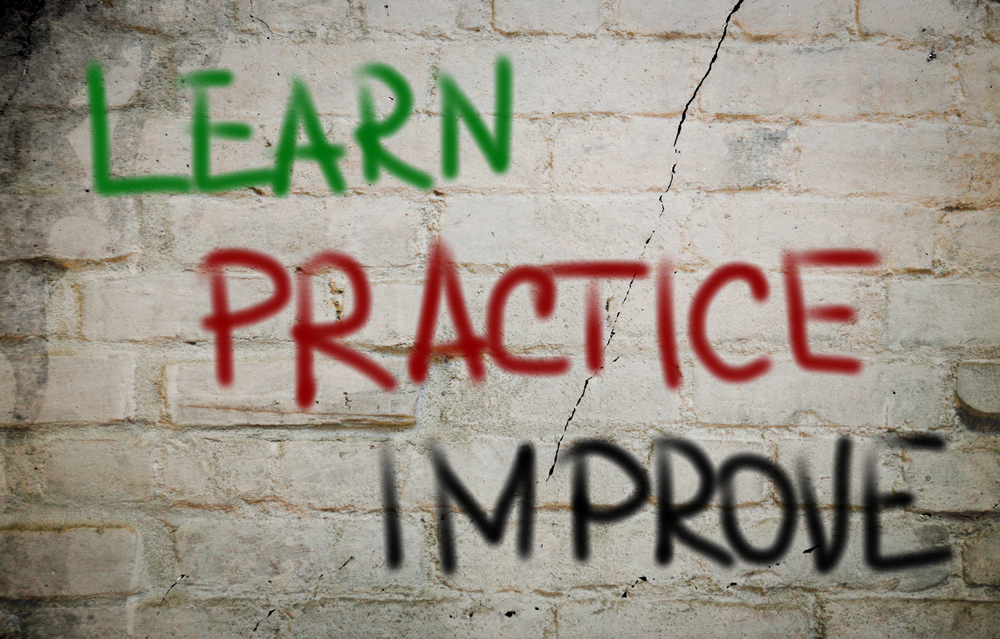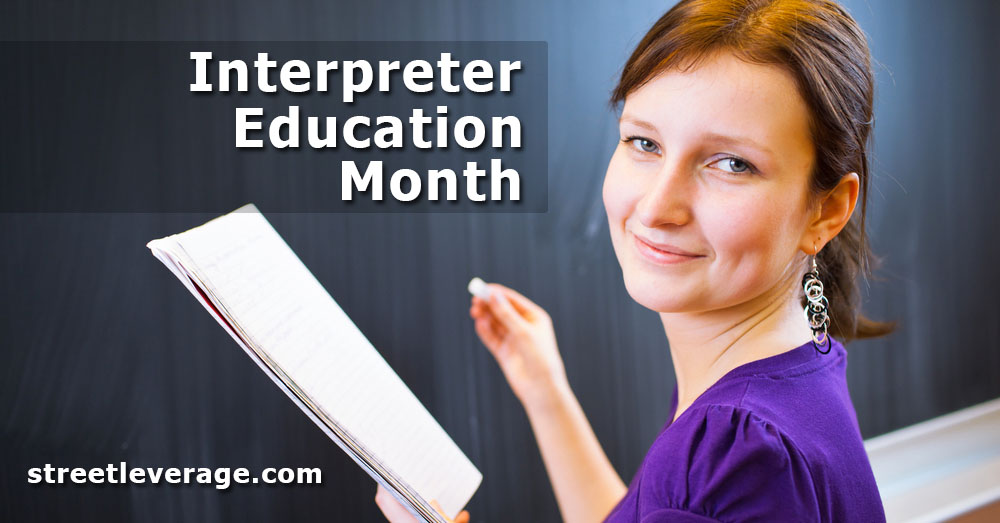
What makes a Sign Language Interpreter Educator? Jessica Bentley-Sassaman shares why this title belongs not only to instructors at the front of the classroom, but to those who guide and mentor interpreters throughout their education and career.
Traditionally, when people think of a sign language interpreter educator, they think of a person who formally teaches in an Interpreting Program at a college or university. It is true that instructors and professors who work at colleges and universities are interpreter educators, however there are so many more who guide new interpreters and interpreting students on their way to becoming a proficient interpreter. The definition of a sign language interpreter educator encompasses so many more people than only those who formally teach.
Sign language interpreters do not learn how to interpret by only attending classes at their local Interpreting Program. They also need to participate in a variety of activities that will engage them and provide opportunities for growth as a language user and as a sign language interpreter. These activities also prepare them for their careers.
These activities include but are not limited to:
- interactions with the Deaf community outside of classes to become proficient in ASL
- observations of working interpreters
- mentoring with interpreter mentors
- working as teams/colleagues with mentors after graduation
Brian Morrison said it aptly in his article, It Takes a Village to Raise a Sign Language Interpreter, “Interpreter education programs have a finite amount of time. We know that they aren’t able to teach everything we would like students to know before they enter the field” (Street Leverage, 2013). Interpreter educators are not the only people who are doing the educating of new interpreters.
Expanding the Definition
Mentors
Perhaps you have thought, ‘I just mentor students, I am not an educator.’ Being “just” a mentor is educating interpreters. Mentors, whether Deaf or hearing, teach new sign language interpreters about language use, application of ethical decision making in the moment, on-site logistics, debriefing after an interpretation, providing immediate feedback, engaging in reflection, and assisting in application of new skills. Some mentors team up with working interpreters who are working towards certification, state licensure, or the Educational Interpreter Performance Assessment. Even though that interpreter is not a student, he or she is still learning about a new skill and learning how to apply that new skill. I have worked with mentors several times in my career as an interpreter – as an intern on my practicum, when working towards earning my RID certification, years later as a certified interpreter when I was working on taking the Specialty Certificate: Legal. Even now, if a situation comes up and I need to bounce ideas off another, I call a more seasoned interpreter and pose my questions. Mentors play a crucial role in the skill development of interpreters, no matter if the interpreter is novice or seasoned. Mentors are interpreter educators.
Some interpreting agencies have mentorship programs, whether formal or informal. These programs assist during the transitional period from graduation to certification or to working interpreter. By setting up these types of mentorships, these agencies provide opportunities for new sign language interpreters to work with seasoned interpreters. They have a vested interest in seeing the Deaf community receiving the quality services that they deserve. These agencies are interpreter educators.
Presenters
Workshop presenters are educators. The knowledge that presenters impart to interpreters helps mold them, sharpening their skill sets, teaching new information, new insights, and new ways of thinking. Sign language interpreters in all walks of life grow from the content taught during workshop trainings. Whether it is ground breaking information, or a new spin on an old theory, if you are a workshop presenter, you are an educator.
Deaf Community
Deaf community members who take new interpreters under their wing and help get them established in the Deaf community are interpreter educators. The amount of information/experience the Deaf community graciously gives to sign language interpreters is invaluable. Stacey Webb noted the importance the Deaf community has on the interpreting community in her article, The Value of Networking for the Developing Sign Language Interpreter. There is no way to fully express the debt and gratitude owed to the Deaf community for the valuable instruction. You are an educator.
Researchers
Researchers provide the theory, the reasons behind why we do what we do as professionals. Their contributions to the field of interpreting have expanded our horizons, have put a term to what it is we do, have validated that ASL is a language, helped interpreters understand the process of interpretation. Through articles, books, workshops, and courses taught, the cutting edge research expands sign language interpreters’ horizons. Researchers are educators.
It Takes More Than One
It takes more than just one teacher to produce a qualified sign language interpreter. For all those who are involved in teaching, guiding, mentoring, encouraging, and embracing interpreters; you are educators.
Improving the quality of interpreters is the core of who we are as a profession. Our united goal is to provide the Deaf community with the qualified, effective interpreting services, embracing the concept of a Deaf-heart (see Betty Colonomos’ article Sign Language Interpreters and the Quest for a Deaf Heart) and giving back to the Deaf and interpreting communities for future generations. For everything you have done to assist a new interpreter, you are an interpreter educator and CIT is an organization for you.
Where Do Educators Find Support?
There has been a misconception that CIT is only for interpreter educators. This is not the case. The Conference of Interpreter Trainers was established in 1979. CIT’s mission statement starts out with our purpose, to “encourage the preparation of interpreters who can effectively negotiate interpreted interactions within the wider society in which Deaf people live” (CIT).
The CIT conference is a gathering of people like you, interpreter educators. The conference is a great time to network with other professionals. Learn about new teaching approaches, mentoring practices, standards in interpreter education, technology, and application of studies. This conference is a great place to learn more about being an interpreter educator and to get involved. CIT is for you!
My Personal Journey to CIT
I began teaching at an ITP in 2006. At that time I was unaware CIT existed. A fellow educator at another institution had talked to me about and encouraged me to join. He also encouraged me to get involved in a CIT committee. That advice lead me to joining and becoming involved in CIT. I attended my first CIT conference in 2010 and I enjoyed the intimacy of the conference. I was able to network with and get to know many other CIT members who were educators, presenters, and mentors. That networking has made me a better educator. Attending CIT conferences is like coming home to a community who has a vested interest in providing high quality interpreting services for the Deaf community.
In Conclusion
Everyone who has a hand in assisting interpreting students, new and working interpreters is an interpreter educator. Your role in that interpreter’s career is important. By being involved with an interpreter student, new and working interpreters, and providing feedback, you are sustaining the field of interpreters, you are ensuring that the interpreters gain and have the necessary interpreting skills and understanding of what the Deaf community looks for in interpreters. As time goes on, those interpreters will look back and remember that someone else took an interest in assisting them. Those interpreters are the future and they will learn by example how to give back to the interpreting and Deaf community based on how you educate them. You are an interpreter educator.





